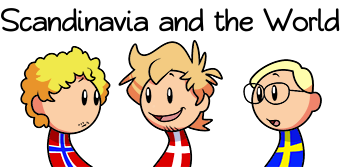6 years ago #9822727
4
0
From my point of view,the craziest way of using latin alphabet is the Vietnamese way.
Italy:*Sobbing*
Vietnam:Can I add these?
(Shows:ỵ ý ỹ ỷ ỳ ự ứ ữ ử ừ ứ ú ủ ù ũ ụ ị í ĩ ỉ ì đ é ẻ è ẽ ẹ
ê ề ể ễ ế ệ ẵ ắ ặ â ầ ẩ ấ ậ à ả ã á ạ ă ẳ ằ)
Italy:*fainted*
Italy:*Sobbing*
Vietnam:Can I add these?
(Shows:ỵ ý ỹ ỷ ỳ ự ứ ữ ử ừ ứ ú ủ ù ũ ụ ị í ĩ ỉ ì đ é ẻ è ẽ ẹ
ê ề ể ễ ế ệ ẵ ắ ặ â ầ ẩ ấ ậ à ả ã á ạ ă ẳ ằ)
Italy:*fainted*
10 years ago #9505956
3
0
Have you ever seen our Polish alphabet? A Ą B C Ć D E Ę F G H I J K L Ł M N Ń O Ó P R S Ś T U W Y Z Ź Ż. Poles also use digraphs: ch cz dz dż dź rz sz.
6 years ago #9826455
2
0
Well, hungarian alphabet contains "double letters" and one "triple letter" - with some other, special letter too.
(a-á-b-c-cs-d-dz-dzs-e-é-f-g-gy-h-i-í-j-k-l-ly-m-n-ny-o-ó-ö-ő-p-q-r-s-sz-t-ty-u-ú-ü-ű-v-w-x-y-z-zs)
(a-á-b-c-cs-d-dz-dzs-e-é-f-g-gy-h-i-í-j-k-l-ly-m-n-ny-o-ó-ö-ő-p-q-r-s-sz-t-ty-u-ú-ü-ű-v-w-x-y-z-zs)
11 months ago #9885321
1
0
i wish þ and all the other funky anglo saxon letters were still in english
damn you normans, you made english WEIRD
damn you normans, you made english WEIRD
Add comment: Please Sign in or create an accout to comment.




 Support the comic on
Support the comic on 















666
Polish, however, is absolutely insane. And don't even get me started on Lithuanian.
Meanhƿile, I have my idea əf a perfect Eŋliʃ ælφəbet: A Æ B C Ↄ D Ð E Ǝ F Φ G H I J K L M N Ŋ O P R S ʃ T Þ U V Ƿ X Y Ȝ Z
Neƿ letters are æʃ, ɔe, eð, ʃƿa, φi, eŋ, eʃ, þorn, ƿynn, ænd yogh. W ƿəs replaced ƿiþ ƿynn, ænd q ƿəs removed. Yogh ƿould have gone æfter z, but it's just ƿroŋ for ðe ælφəbet to end ƿiþ anyþiŋ oðer ðæn z.